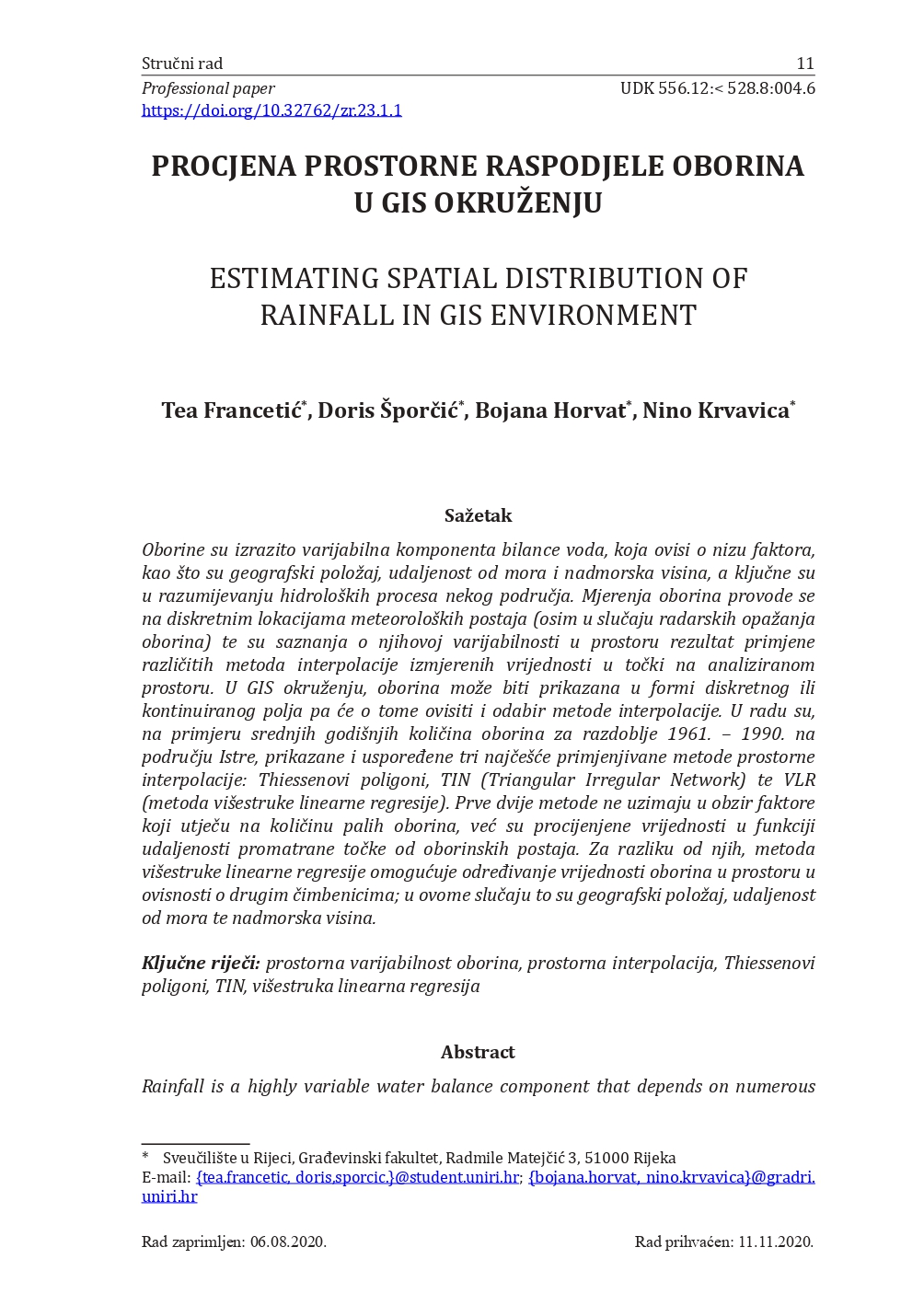Procjena prostorne raspodjele oborina u GIS okruženju
##plugins.themes.bootstrap3.article.main##
Sažetak
Oborine su izrazito varijabilna komponenta bilance voda, koja ovisi o nizu faktora, kao što su geografski položaj, udaljenost od mora i nadmorska visina, a ključne su u razumijevanju hidroloških procesa nekog područja. Mjerenja oborina provode se na diskretnim lokacijama meteoroloških postaja (osim u slučaju radarskih opažanja oborina) te su saznanja o njihovoj varijabilnosti u prostoru rezultat primjene različitih metoda interpolacije izmjerenih vrijednosti u točki na analiziranom prostoru. U GIS okruženju, oborina može biti prikazana u formi diskretnog ili kontinuiranog polja pa će o tome ovisiti i odabir metode interpolacije. U radu su, na primjeru srednjih godišnjih količina oborina za razdoblje 1961. – 1990. na području Istre, prikazane i uspoređene tri najčešće primjenjivane metode prostorne interpolacije: Thiessenovi poligoni, TIN (Triangular Irregular Network) te VLR (metoda višestruke linearne regresije). Prve dvije metode ne uzimaju u obzir faktore koji utječu na količinu palih oborina, već su procijenjene vrijednosti u funkciji udaljenosti promatrane točke od oborinskih postaja. Za razliku od njih, metoda višestruke linearne regresije omogućuje određivanje vrijednosti oborina u prostoru u ovisnosti o drugim čimbenicima; u ovome slučaju to su geografski položaj, udaljenost od mora te nadmorska visina.
##plugins.themes.bootstrap3.article.details##

Ovaj rad licenciran je pod Creative Commons Attribution-NonCommercial-NoDerivatives 4.0 International License.
Sadržaj časopisa u cijelosti je besplatno dostupan. Korisnici smiju čitati, preuzimati materijal i dijeliti ga s drugima pod uvjetom da na odgovarajući način citiraju izvornik, te da ne mijenjaju ili na drugi način koriste materijal u komercijalne svrhe, u skladu s CC BY-NC-ND licencom Creative Commons (CC) licencom.

